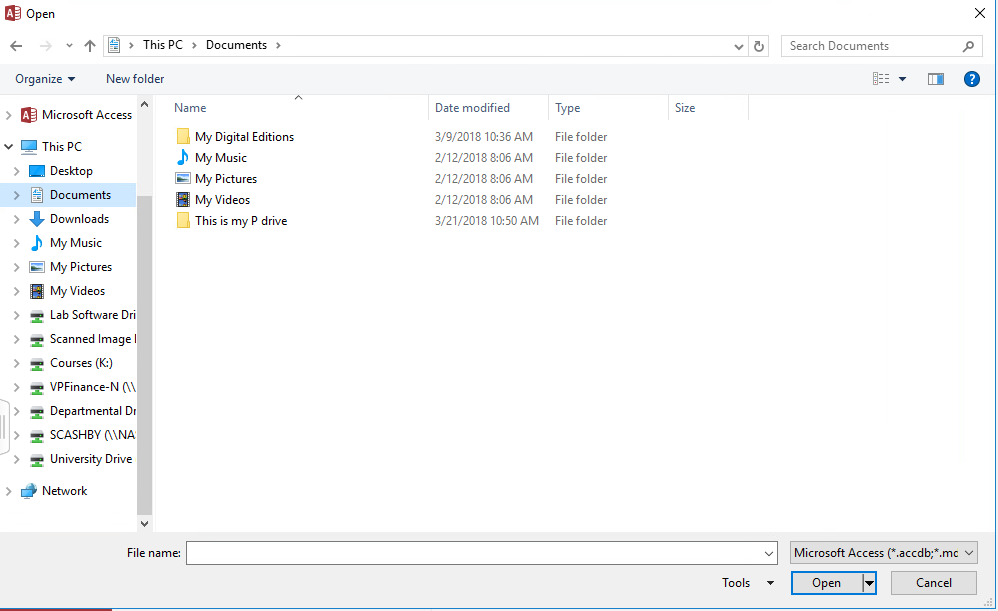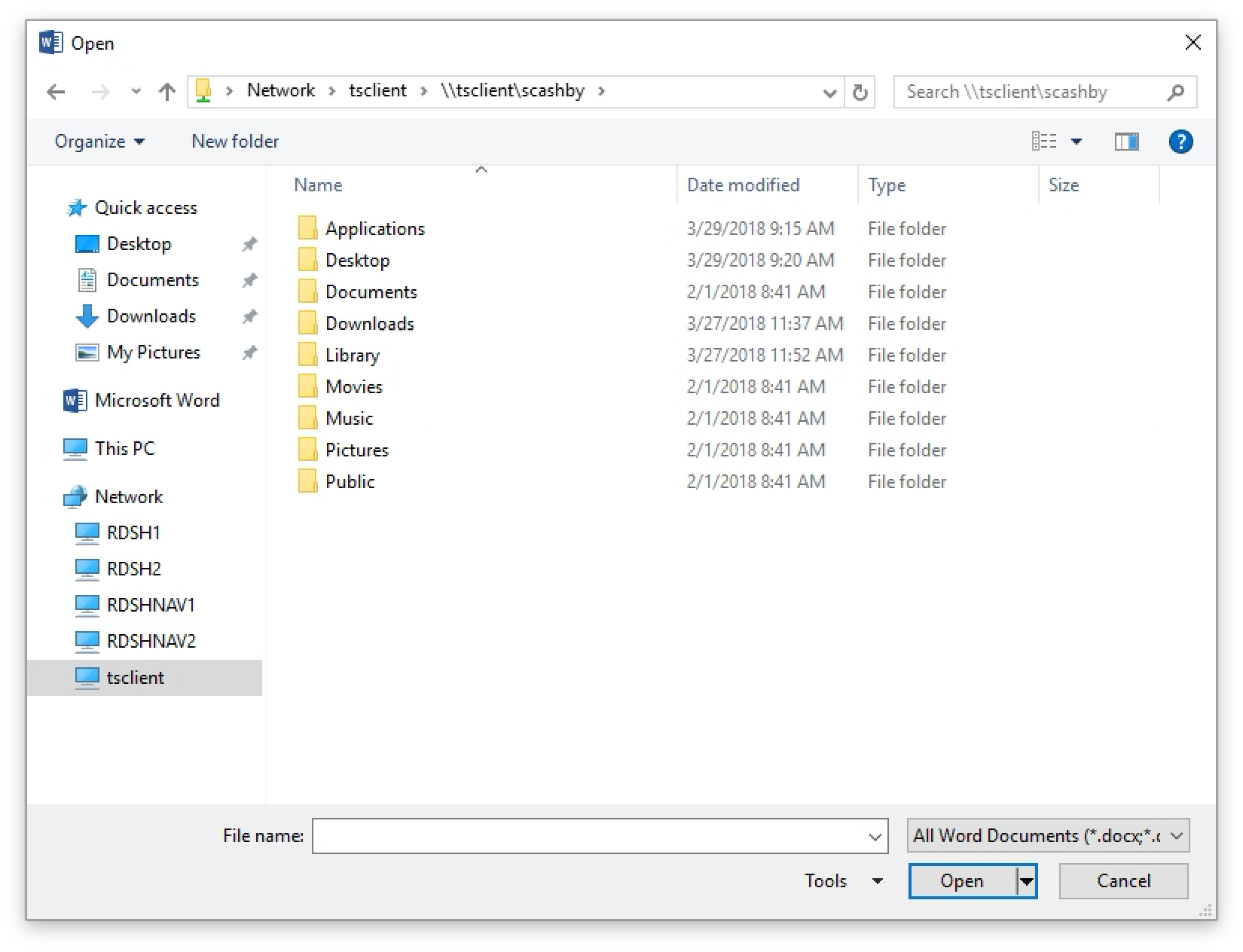This article shows how to MyApps works with files and how to add your local drives to the app.
Connecting to MyApps
There are two ways to connect to MyApps. If you are only working off your P drive, then you can simply point your browser to https://myapps.salisbury.edu and log in. However, if you want to work with files on your own computer, you'll need to download and install the Horizon Client for your operating system.
- Connecting to and Using Workspace (Formerly Myapps)
- Installing VMware Horizon Client for MyApps for Mac
Once you have installed the client, you'll need to configure it to connect to MyApps.
Working with files on your network drives using MyApps
By default, MyApps works with files on your P drive. When you first open MyApps, it will create a Windows like folder structure on your P drive, and your P drive will act like your This PC computer.
As you can see, MyApps created a Documents folder on my P drive, as well as other folders:
You also have access to your network drives as well, such as the shared K drive. If you just want to work with files on the P drive or the network drives, then you can open and save files as normal from any application, whether using the web or the client, without any further setup needed.
Working with local files using MyApps
If you want to use local files, you'll need to use the VM Horizon Client and set it up to use local files and folders
- Open the VM Horizon Client.
- The client should be automatically configured to share local files. Open up any program to begin.
- When you open the program, the VM Horizon Client will prompt you to allow sharing of local files. Click Allow.
- Once you do, you'll be able to open and save files from your Mac. For example, in Microsoft Word, under Open click Browse.
You can find your computer listed in three different places. Under Network, click tsclient. Your computer will be listed there as \\tsclient\<username> where username is the account you use to log in.
It can also be found under This PC as <username> on <computername> where username is the account you use to log in and computername is the name of your computer, in this case scashby on AC145-X-91662. Finally, it is also given a drive letter and mapped like a network drive, such as <username> (\\tsclient) (driveletter), like scashby (\\tsclient) (Z:) in the example below.Note for Windows users
For Windows users, VM Horizons client adds the local computer name to the username, such as scashby.AC145-M-90057 where scashby is the username used to log into the computer named AC145-M-90057.
- Opening that computer folder or entry will give you all the folders on your hard drive.
- You can then open the folder you want to open your local file. In this case I'm looking at a PDF file on my desktop.
USB drives
If you have a USB drive attached to your computer, you will be able to access those files as well. On a Mac, under Network, it will show up as a separate entry: \\tsclient\<drivename> where drivename is the name of the USB drive, in this case MULTIBOOT. Under This PC, it shows up as a mapped drive with the name of the USB drive: <drivename> (\\tsclient) (<driveletter>), such as MULTIBOOT (\\tsclient) (Y:).
On a Windows PC, under Network it shows up as \\tsclient\<USBdriveletter> where USBdriveletter is the drive letter assigned by your computer to the USB drive, which in this case is the D drive. Under This PC, it shows up as a mapped drive with the letter of the USB drive: <USBdriveletter> (\\tsclient) (<driveletter>, such as D (\\tsclient) (Y:).
Related articles
There is no content with the specified labels









